Lorsque l’on effectue un accompagnement Scrum ou Kanban, cela nécessite souvent toute une série d’événements comme des réunions de cadrage, de sensibilisation des parties prenantes puis des formations à l’Agilité puis à Scrum / Kanban avant d’effectivement pouvoir démarrer quelque chose. C’est un processus que je trouve parfois un peu lourd pour les résultats à court terme que l’on peut obtenir.
Aujourd’hui, je fais l’expérimentation d’un accompagnement plus léger, centré sur la mise en place d’un management visuel pour permettre à l’équipe d’avoir une compréhension partagée de la situation actuelle. On parle bien évidemment d’Agilité dans nos échanges mais l’objectif est avant tout d’apporter un outil leur permettant de prendre des décisions et ainsi de passer à l’action.
Je vous partagerais dans de futurs articles les ateliers successifs mis en places ainsi que mon ressenti de cette approche différente ! 🙂
Premier atelier d’une demi-journée : le kick-off ! 😉
Agenda
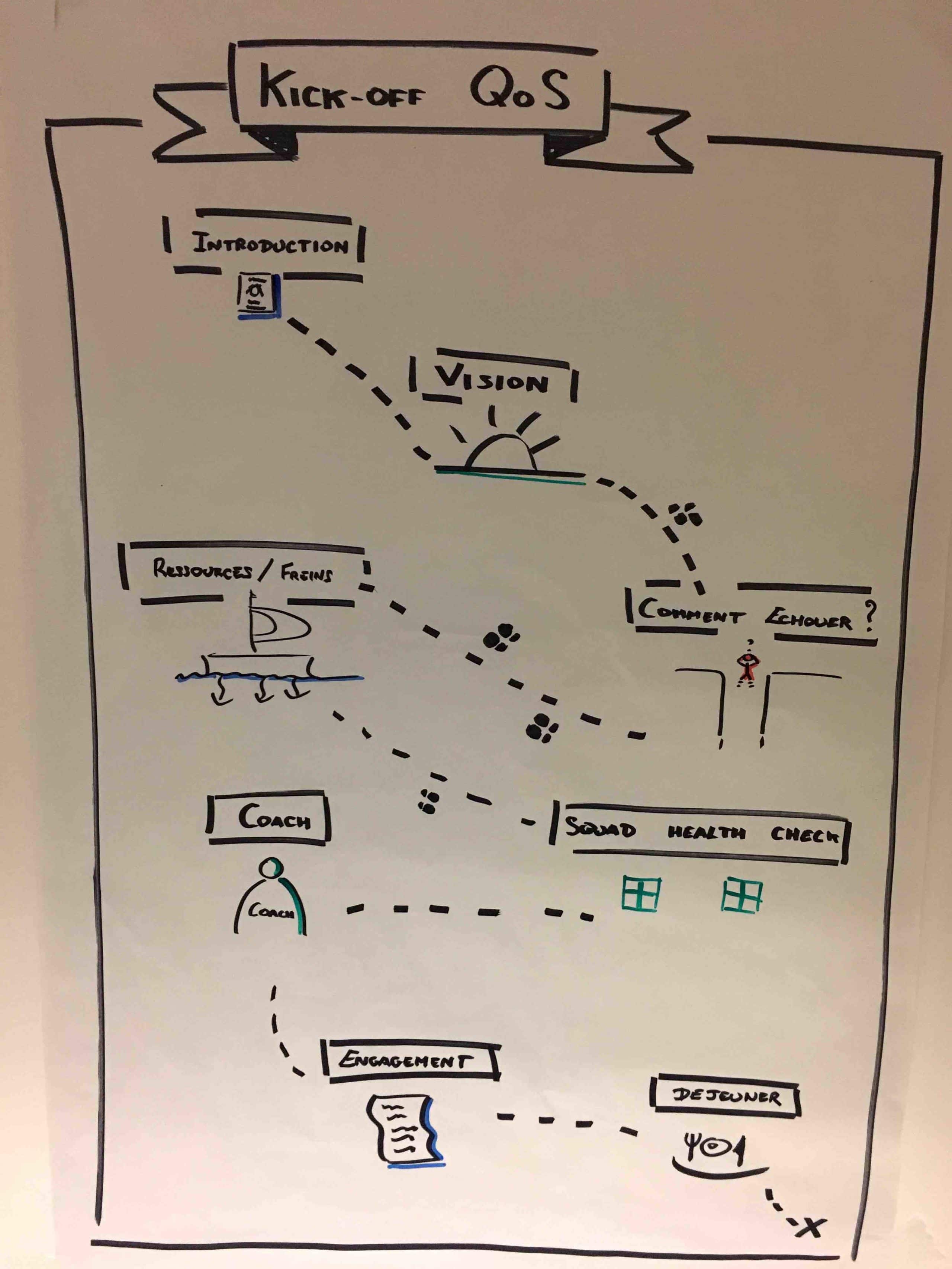
Voilà le programme pour cette première demi-journée d’atelier :
- Introduction : « Qui suis-je, qui êtes-vous et qu’allons-nous faire aujourd’hui ? »
- Vision : « Pourquoi êtes-vous là ? »
- Comment échouer : « Que pourriez-vous mettre en place pour échouer ? »
- Speed Boat : « Quels sont vos ressources, vos freins et les risques que vous entrevoyez ? »
- Squad Health Check : « Quelle est la santé de votre équipe aujourd’hui ? »
- Coach : « Mais qu’est ce qu’un coach agile ? »
- Engagement : « Après tout cela, quel engagement personnel prenez-vous ? »
- Déjeuner : « Après l’effort, le réconfort ! »
Draw Yourself et Speedboat
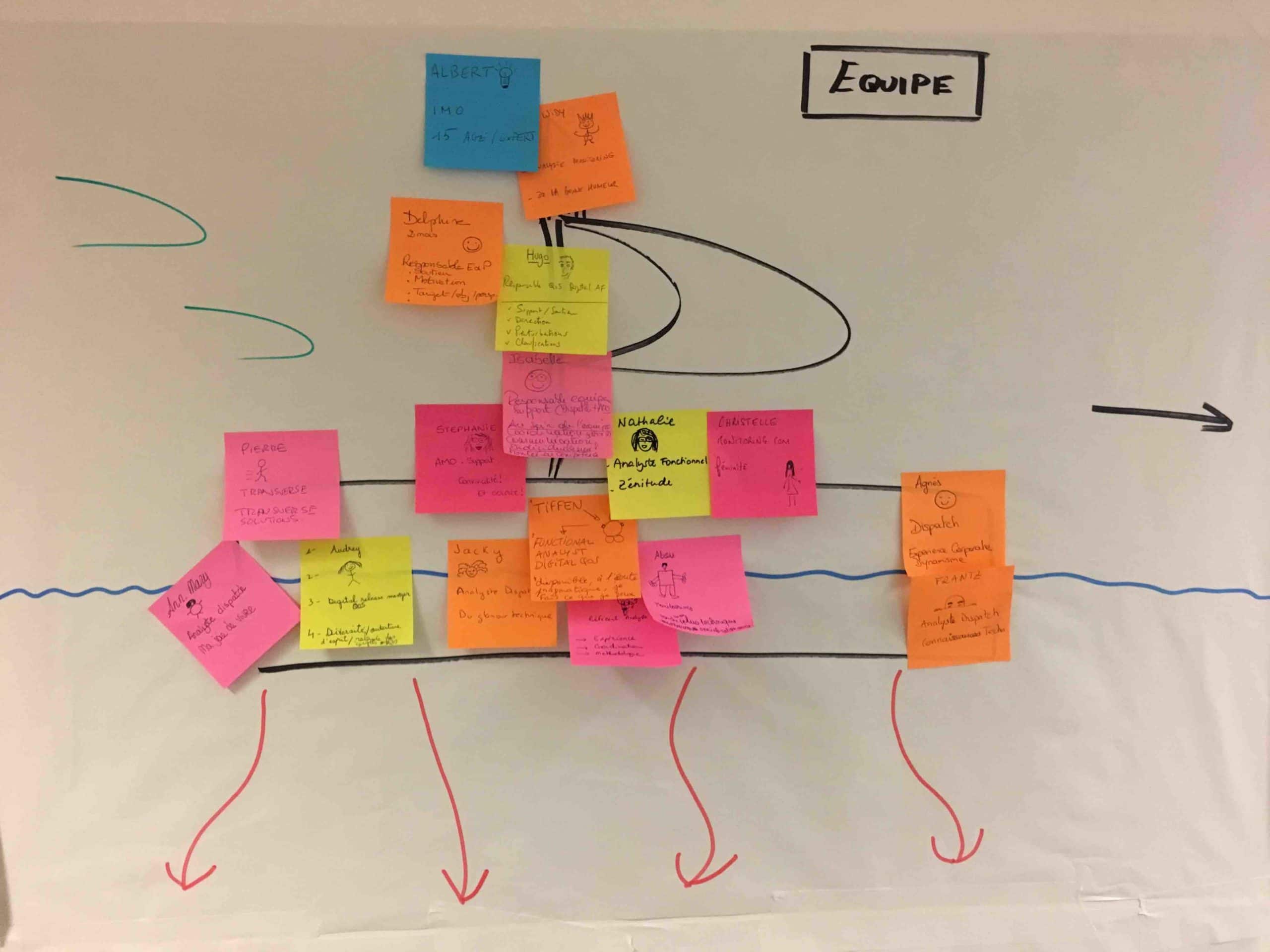
Pour débuter la session, j’ai décidé de partir sur l’activité Draw Yourself comme icebreaker. Le principe est simple, on demande à chacun de se dessiner sur un support (A4, post-it…) puis de se présenter.
Dans mon cas, j’ai proposé aux participants de structurer leurs productions comme suit :
- Leur prénom
- Leur représentation
- Leur rôle dans l’équipe / titre
- Ce qu’ils pensent apporter à l’équipe
L’idée était pour moi de pouvoir identifier le type de profils que j’avais en face de moi et de permettre à chacun de matérialiser son apport individuel au sein du groupe.
De plus, pour avoir un fil conducteur cohérent dans la suite d’ateliers, j’ai combiné la restitution du Draw Yourself avec la matérialisation du bateau du Speed Boat. En effet, lorsque tout le monde fut prêt, j’ai demandé à chacun de venir se présenter en se positionnant sur le bateau. Il est intéressant de voir que naturellement, les personnes expliquent pourquoi elles se positionnent à tel ou tel endroit ce qui nous donne des indices supplémentaires de leur vision d’eux-mêmes dans l’équipe.
Vision
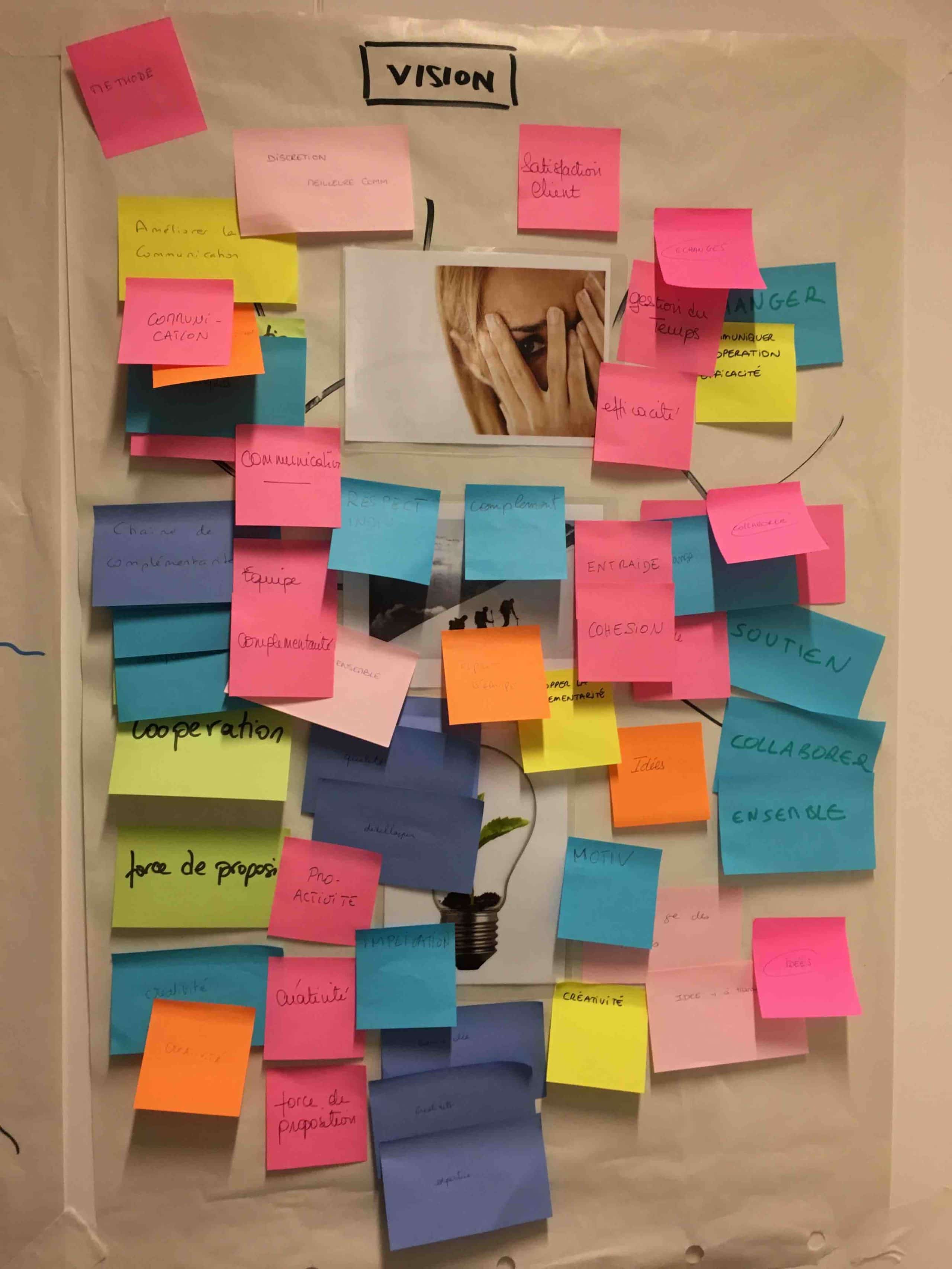
Après avoir matérialisé le bateau de l’équipe, il était temps de savoir dans quelle direction il devrait se déplacer !
En terme de processus, j’ai demandé :
- au sponsor : de partager sa vision par l’intermédiaire d’images de photo-langage (préalablement disposées sur une table). Il en choisit finalement 3 pour soutenir son discours
- au reste de l’équipe : de noter individuellement sur des post-its les mots clés du discours du sponsor
Après cela, j’ai disposé les images sélectionnées par le sponsor sur une feuille de Paperboard et j’ai invité les participants à venir coller les Post-its avec les mots clés correspondants dessus.
L’exercice fut particulièrement intéressant pour le sponsor qui a pu obtenir un feedback direct sur ce qui a pu être retenu par son équipe.
Mur de l’échec
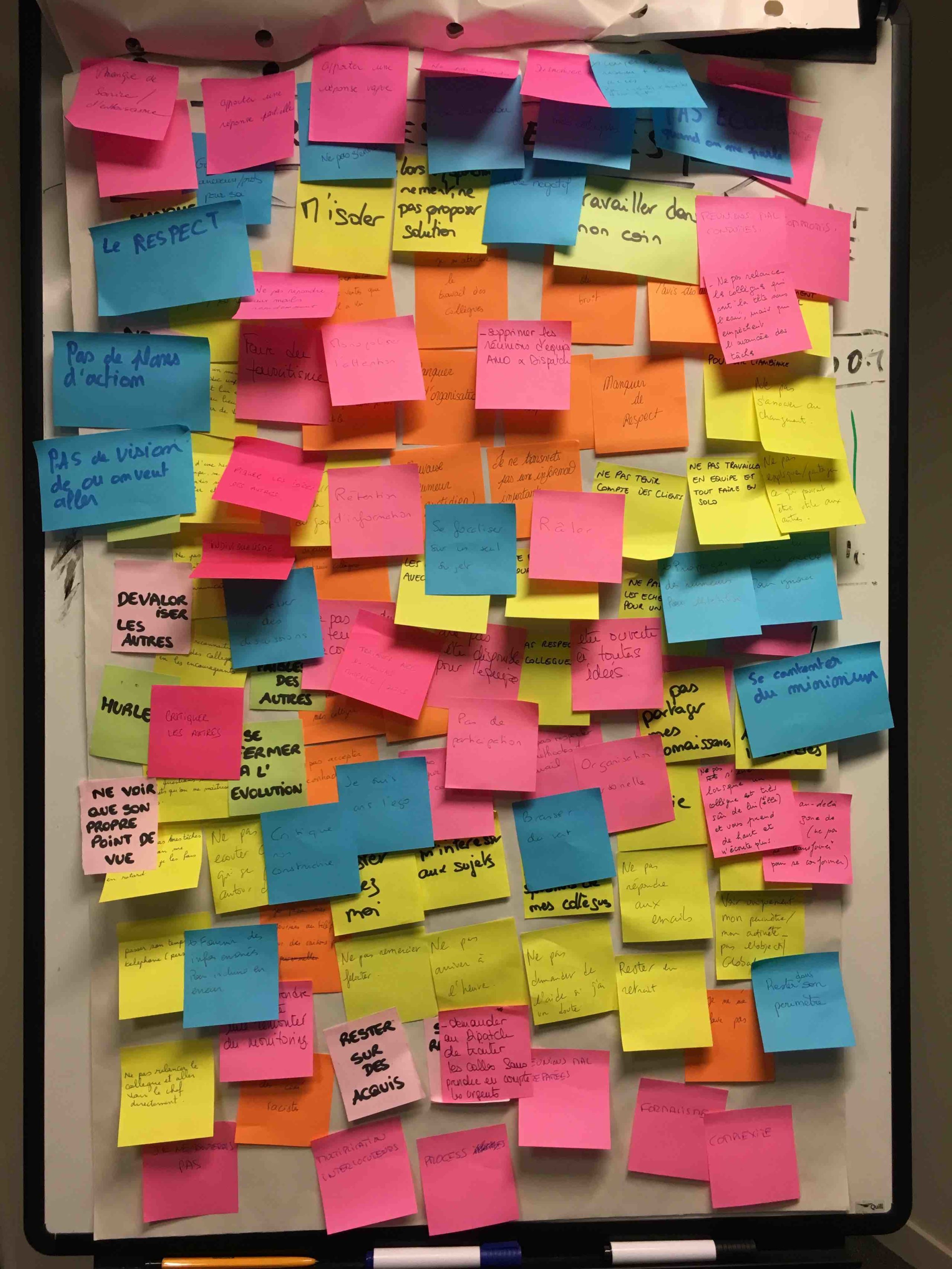
Après avoir synchronisé tout le monde sur la vision, un de mes exercices favoris du moment est de poser la question suivante à l’équipe :
Quelles sont les 10 merveilleuses techniques que vous utiliseriez
pour faire échouer la mise en oeuvre de cette vision ?
Je rappelle quelques éléments importants :
- C’est un exercice effectué individuellement et débriefé en groupe complet
- Le nombre 10 est choisi plus ou moins au hasard, l’idée étant de donner un chiffre suffisamment grand pour pousser les personnes à creuser les options à leur disposition
- Les techniques doivent être les plus concrètes possibles. Que ce soient des techniques élaborées ou non, farfelues ou non, sachant que les plus farfelues ont pour la plupart du temps un vrai ancrage dans la réalité !
La consigne étant sérieuse (les techniques doivent être réelles), l’animation doit rester légère pour ne pas focaliser l’énergie du groupe vers l’échec. Bien au contraire, l’exercice a pour vocation de réduire la probabilité d’arrivée de chaque élément cité.
Le débriefing est effectué rapidement. Je demande simplement aux personnes de venir exposer leurs techniques : il n’y a pas de débat entre les participants sur le contenu, simplement une prise de conscience de la créativité de chacun à ce sujet ! 😉
Speedboat : le reste
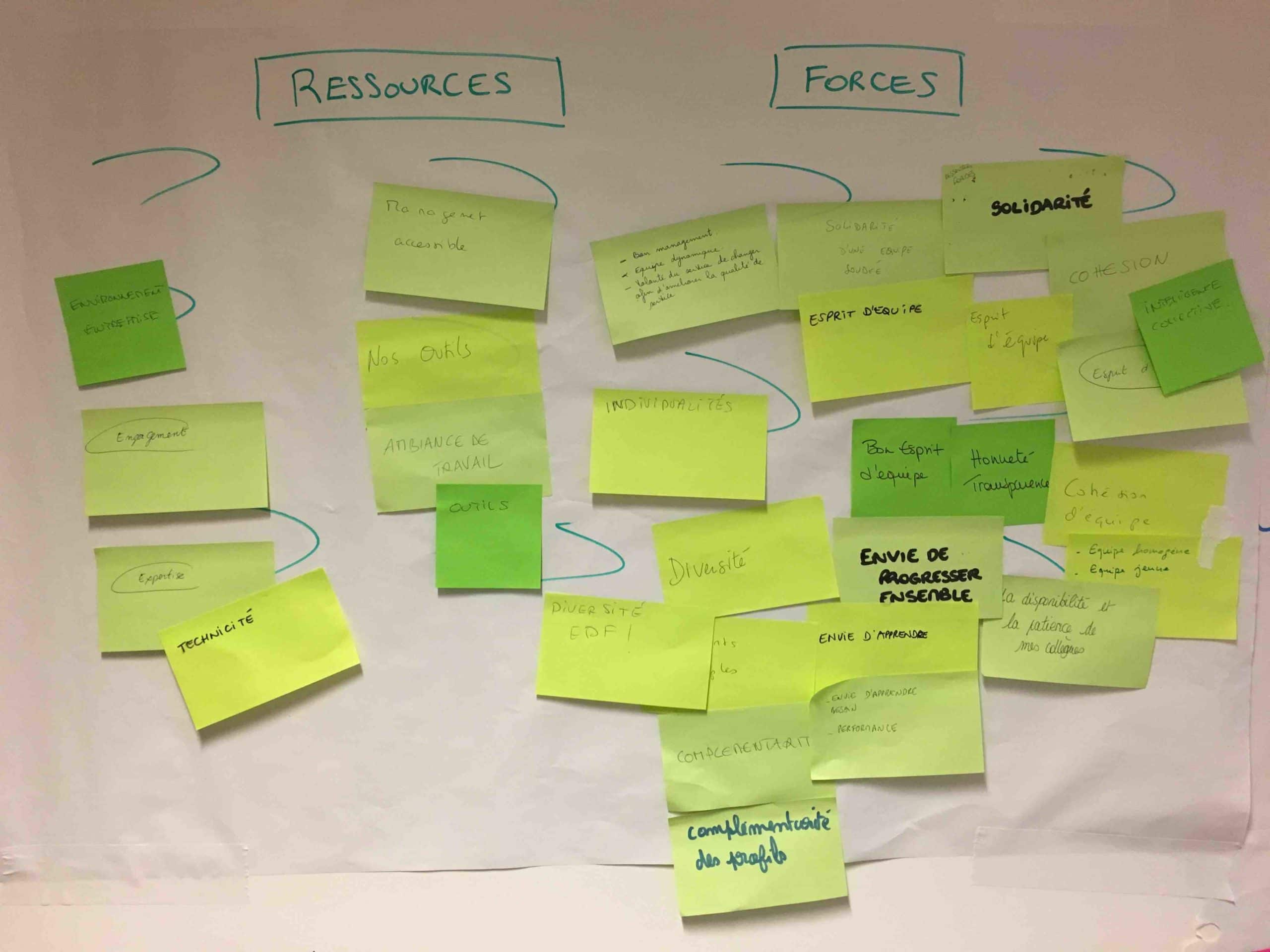
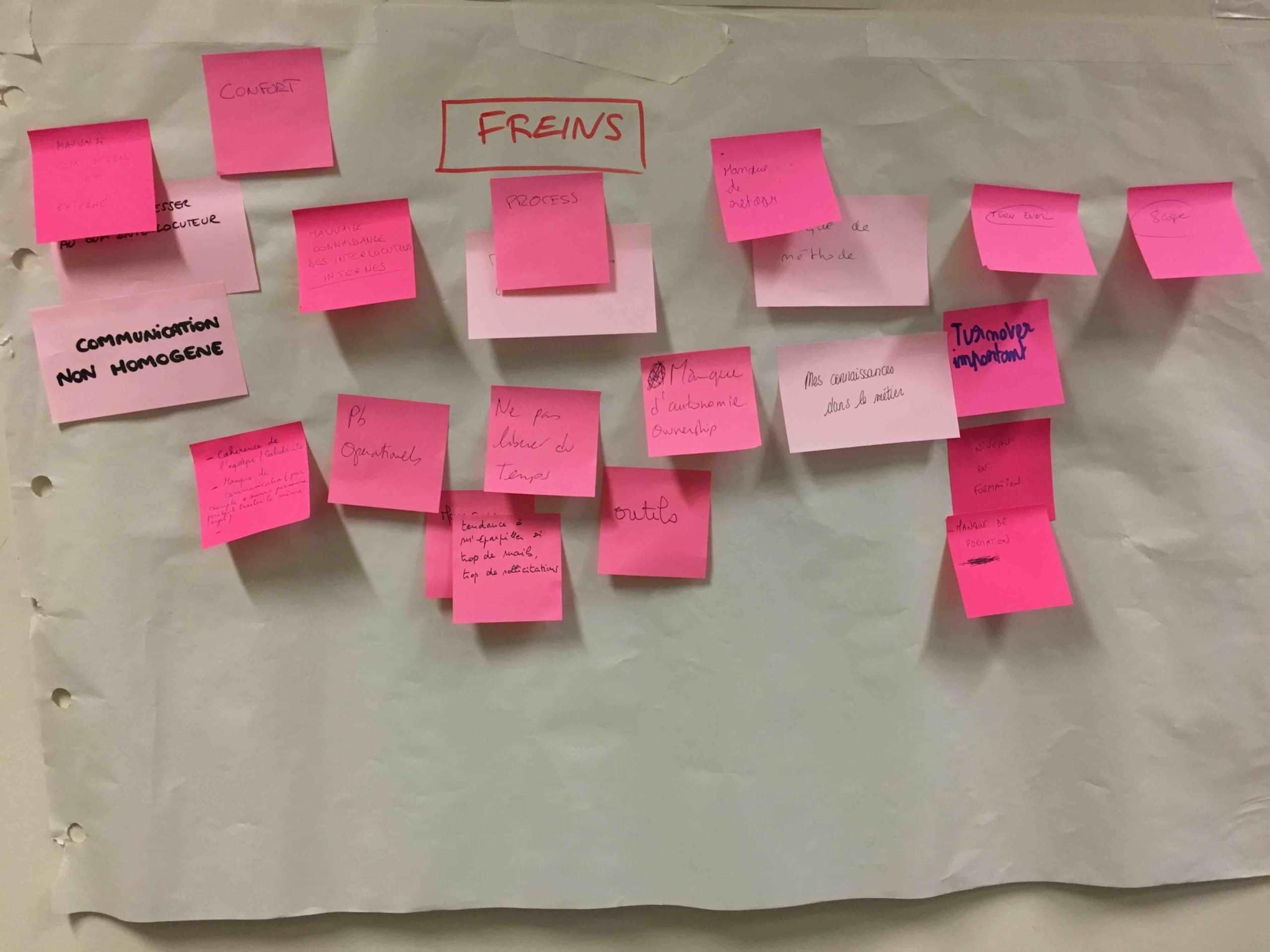
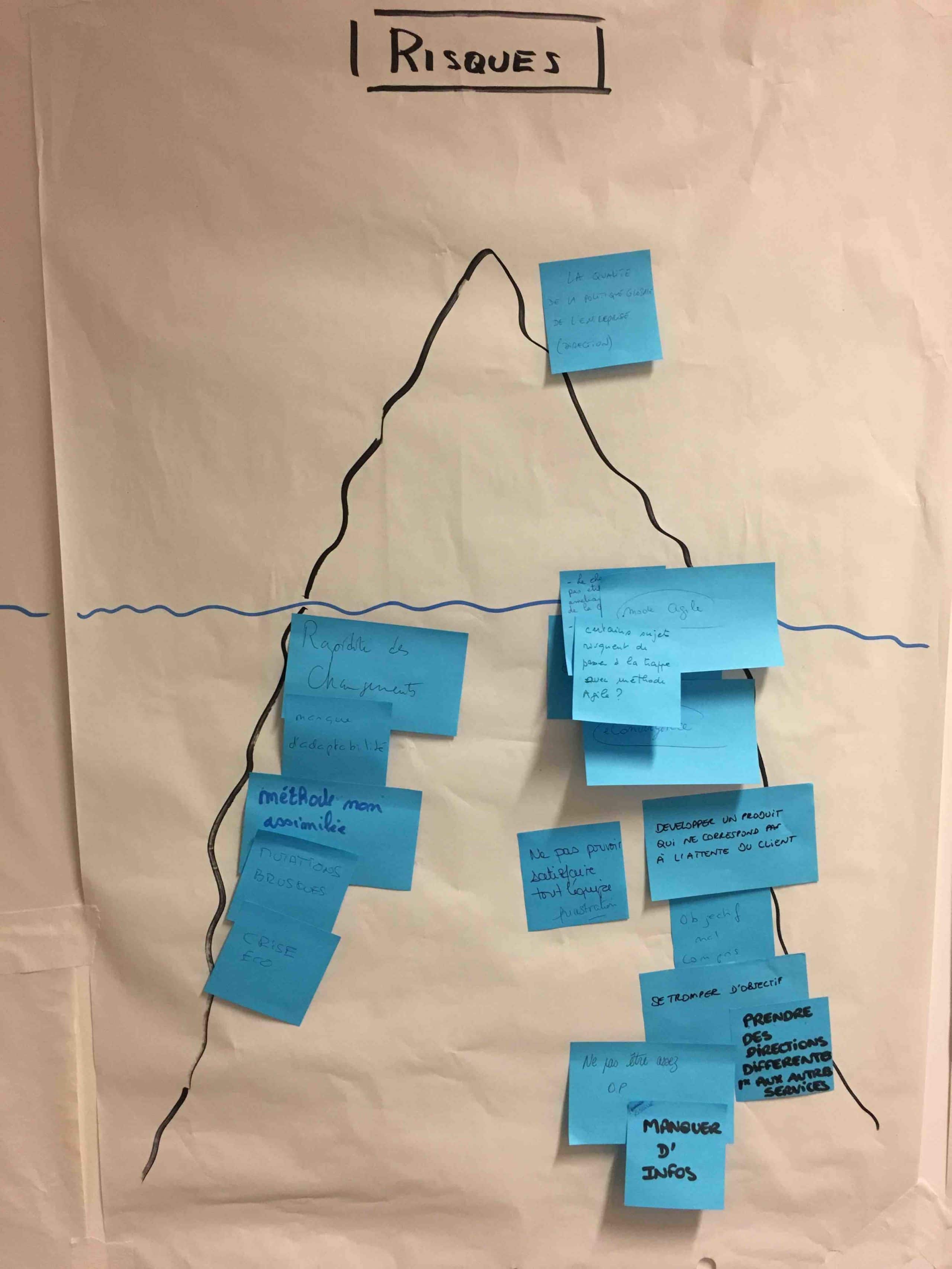
Cette partie correspond simplement à la facilitation des autres composantes du Speed Boat.
Pour plus de détails : voici un article que j’avais écrit à ce sujet.
Squad Health Check
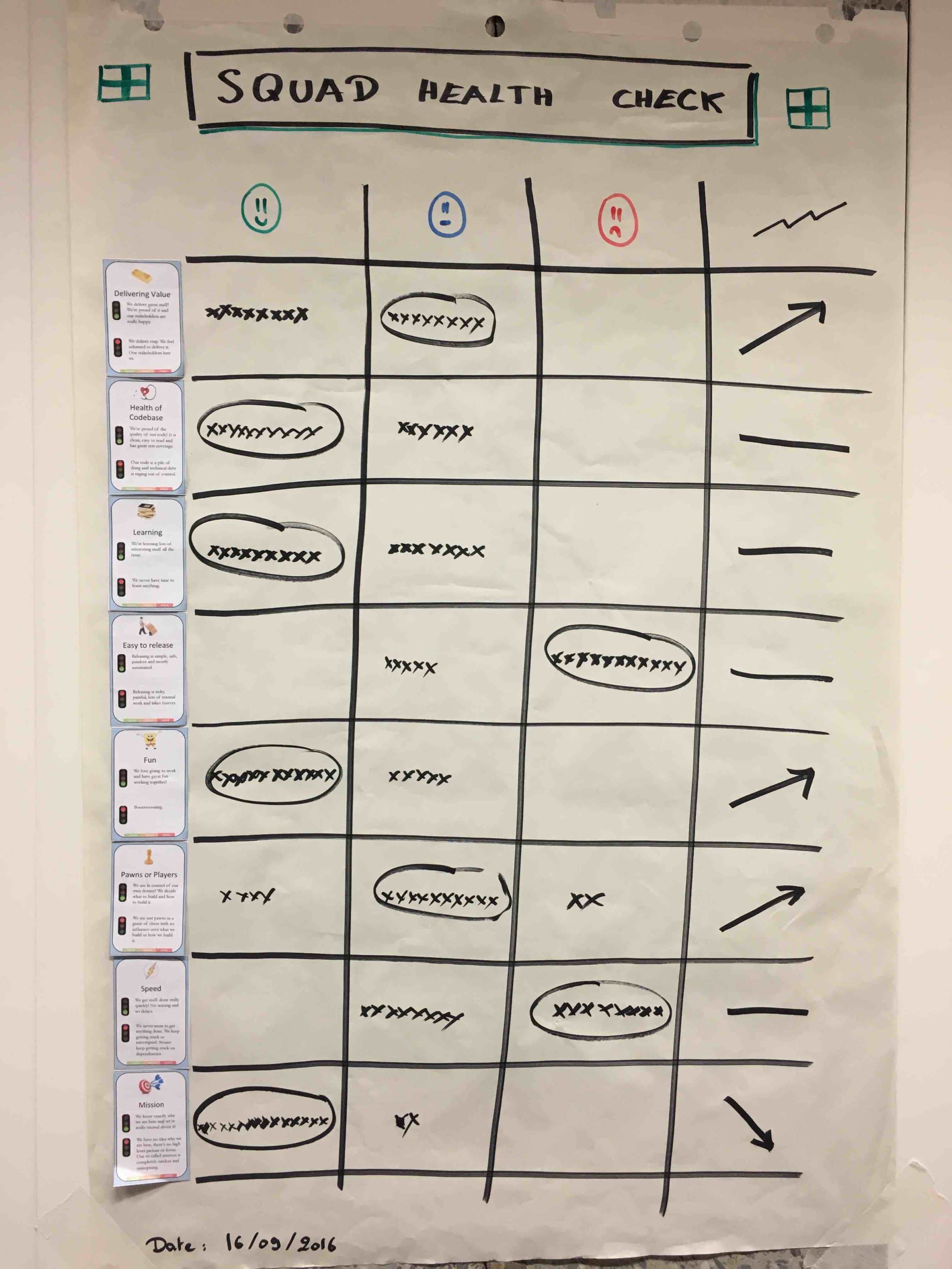
Le Squad Health Check est un outil « convergent » que j’apprécie combiner avec le Speed Boat qui lui est plutôt « divergent » dans le partage des idées.
Il permet ainsi de se faire une idée du ressenti de l’équipe selon certaines problématiques telles que la livraison de valeur, la qualité des livrables, ou encore le fun et l’autonomie.
Comment ça fonctionne ?
Préparation
- Préparez un poster avec toutes les thématiques en colonne
- Construisez 4 colonnes : 3 niveaux de satisfaction + tendance
- Distribuez un set de feux à chacun des participants de l’équipe : feu rouge, feu jaune et feu vert
Exécution
- Pour chaque thématique, lisez l’explication correspondant au feu vert (« definition of Awesome ») et celle correspondant au feu rouge (« definition of Crap ») pour permettre à l’équipe d’avoir une compréhension partagée de l’échelle de notation
- Demandez à chacun de réfléchir individuellement sur la position de l’équipe sur cette échelle
- Lorsque tout le monde est prêt, invitez au partage des résultats
- Après avoir comptabilisé les votes, matérialisez les sur le poster et entourez le résultat majoritaire.
- Discutez des différences dans l’équipe
- Demandez la tendance de la thématique pour le futur : est-ce que l’équipe pense que la tendance est stable ? qu’elle va en s’améliorant ? en se dégradant ?
Le résultat conrrespond alors à l’état de santé de l’équipe à cet instant. L’objectif sera alors de refaire l’exercice dans un mois ou deux pour voir quelles sont les différences.
Vous retrouverez les instructions et le matériel à utiliser ci-dessous :
- https://labs.spotify.com/2014/09/16/squad-health-check-model/
- https://spotifylabscom.files.wordpress.com/2014/09/squad-health-check-model2.pdf
Démarche de coaching

Cette partie est pour moi essentielle pour tisser un lien avec l’équipe. En effet, elle permet simplement de remettre le rôle du coach Agile à sa juste place et de donner du sens à la démarche d’accompagnement.
Dans un premier temps, j’ai demandé au sponsor de partager ce qui avait été au préalable défini ensemble concernant la démarche d’accompagnement. L’intérêt était de donner une visibilité à l’équipe du travail que l’on va effectuer ensemble – toujours en regard de la vision – et ainsi de les préparer aux prochaines étapes.
Dans un second temps, j’ai précisé le rôle du coach Agile selon quelques thématiques :
- Mission : Aider l’équipe à monter en maturité et en autonomie sur la méthode, faire prendre conscience des situations, faire évoluer les pratiques (amélioration continue, résolution de problèmes…)
L’important du message est pour moi surtout d’expliquer que le coach Agile n’est pas là pour imposer quoi que ce soit à l’équipe. Bien au contraire, il est là pour aider l’équipe à atteindre son objectif quelque soit la méthode utilisée, en leur offrant des perspectives nouvelles ou simplement un retour sur leurs pratiques actuelles.
- Valeurs : Transparence, Pragmatisme, Confiance, Communication, Feedback, Authenticité…
Ce ne sont que des éléments parmi d’autres mais pour détailler un petit peu, voilà ce que j’ai pu donner comme précisions :
Transparence, Authenticité : il est important pour moi de dire clairement ce que je pense, de montrer et d’expliquer pourquoi je fais telle ou telle chose pour l’équipe car pour prendre les meilleures décisions, je préfère que toutes les cartes soient sur la table.
Pragmatisme : Plutôt que de n’emmener que des concepts pour les concepts, mon rôle est d’emmener des options les plus actionnables possibles pour l’équipe.
Confiance : il s’avère que j’ai une confiance inconditionnelle dans les capacités et compétences des personnes que j’accompagne – c’est probablement mon côté bisounours. En partant de là, rien n’est vraiment impossible, sauf si on s’en persuade ! 😉
…
- Ce qu’il est : Catalyseur de la méthode, formateur, animateur, observateur, facilitateur, conseiller…
- Ce qu’il n’est pas : Sauveur, directeur de projet, PMO, Manager, Product Owner, Scrum Master…
Enfin pour conclure, je précise que l’Agilité (ou le coach Agile) ne sont que des outils pour atteindre leur objectif.
Engagement

Pour cette dernière partie, j’ai souhaité construire avec l’équipe un contrat de collaboration. Même si cela reste un acte symbolique, je le trouve néanmoins nécessaire et porteur de sens.
N’ayant plus beaucoup de temps à ma disposition, je l’ai réduit au strict minimum en demandant :
Au vu de tout ce que nous avons fait pendant cet atelier
(partage de la vision, état de santé d’équipe, explication de la démarche de coaching),
quel(s) engagement(s) prenez-vous pour l’équipe ?
Comme à mon habitude, je suis le premier à avoir déposé mon engagement. En effet, cela matérialise qu’ils ne sont pas les seuls à s’engager dans l’aventure et que la relation est bien paritaire.
Chacun exprime alors ce sur quoi il ou elle s’engage et y inscrit son nom ou signe symboliquement.
Conclusion
L’atelier s’est plutôt bien passé. Nous avons finalement fait beaucoup de choses en l’espace de 3 heures sachant que le timing a été respecté.
Je trouve la structure de ce kick-off plutôt complet ce qui me conforte dans le fait que je pourrais le réutiliser si besoin ! 🙂
Et vous, que faites-vous pendant une demi-journée de Kick-off ?







2 réponses
Merci Olivier pour cet article très constructif 🙂
Plaisir 🙂